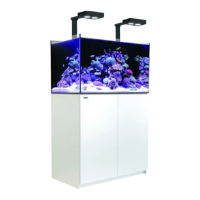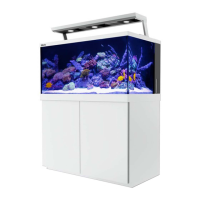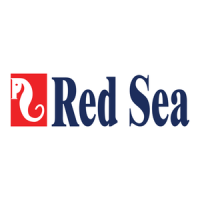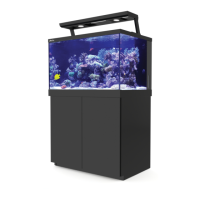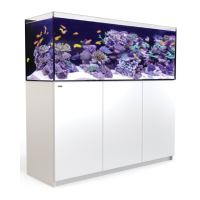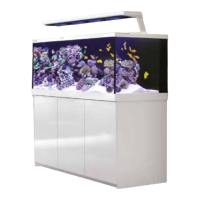Red Sea MAX User Manual
3
Water movement and circulation
Water movement constitutes another critical physical
parameter in reef aquariums. The extensive biological effects
of currents, specifically their role in transporting nutrients and
oxygen, make them crucial for static coral reef species. Water
flow increases the food supply, promotes gas exchange and
improves enzyme action, as well as fuels metabolism,
respiration rates, calcification rates and photosynthesis rates.
At the same time, it provides proper flushing of mucus,
decreasing disease, and sedimentation damage.
Sufficient water movement helps maintain proper water
quality parameters. The turbulence "breaks" the water surface
to promote gas exchange (especially the removal of CO
2
) and
prevents the accumulation of bio-film, which reduces light
penetration. Good water currents eliminate stagnant areas
where decomposing organic matter will otherwise
accumulate.
The Red Sea MAX features two 550 lph (145 gph) circulation
pumps with adjustable direction outlets for sufficient water
movement, according to the desired aquascaping and
invertebrate positions.
Temperature
Reef inhabitants are used to very stable temperature
conditions which may vary slowly within a fairly narrow
range. Since the organisms' metabolic rates change with
temperature, it is essential to avoid any sudden or dramatic
changes.
Most ambient temperature conditions around an aquarium are
lower than the recommended temperature for a reef and the
fan-cooled hood of the MAX dissipates only a small amount of
heat; therefore, under such conditions, only a heater is
required.
In warmer climates, where the ambient temperature is above
the maximum recommended, a chiller should be added to the
system.
We strongly recommend maintaining a temperature range of
24-27°C (76-83°F), unless there is reason to do otherwise.
Filtration
Coral reefs develop and flourish only in ocean areas with clear,
unpolluted, sediment-free water that allows adequate light
penetration. Keeping the reef's delicate creatures in a closed
system requires special attention to the water quality by
maintaining parameters within the narrow range that supports
life. The aquarium's main pollutant results from the
decomposition of organic matter in the ecosystem. An
efficient filtration system removes the coarse pollutants from
the aquarium before they are converted into toxic agents,
which usually exist in a dissolved form and are more difficult
to remove.
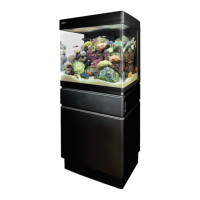
